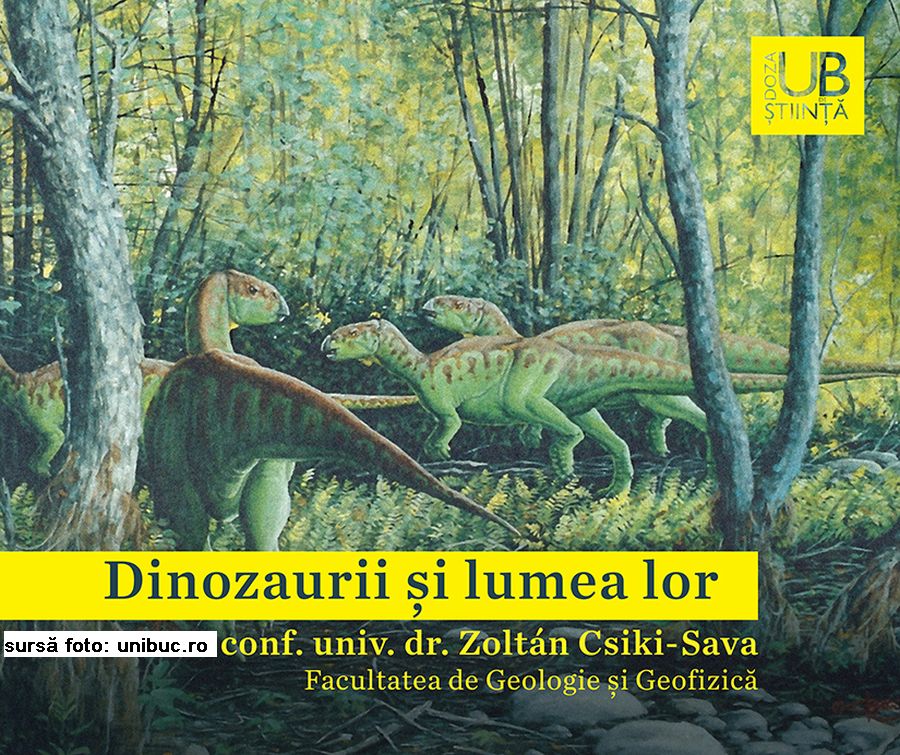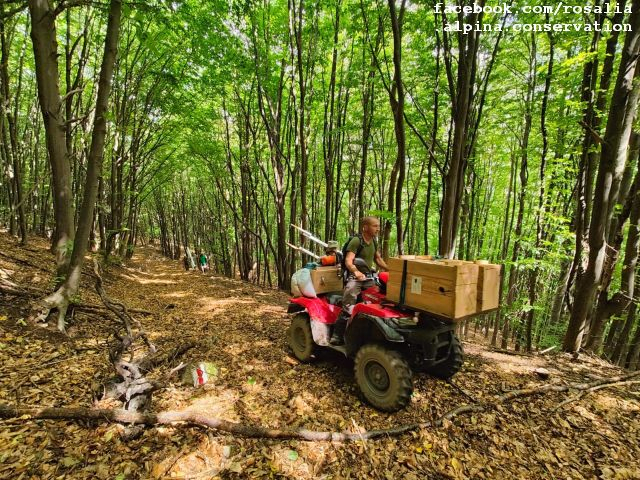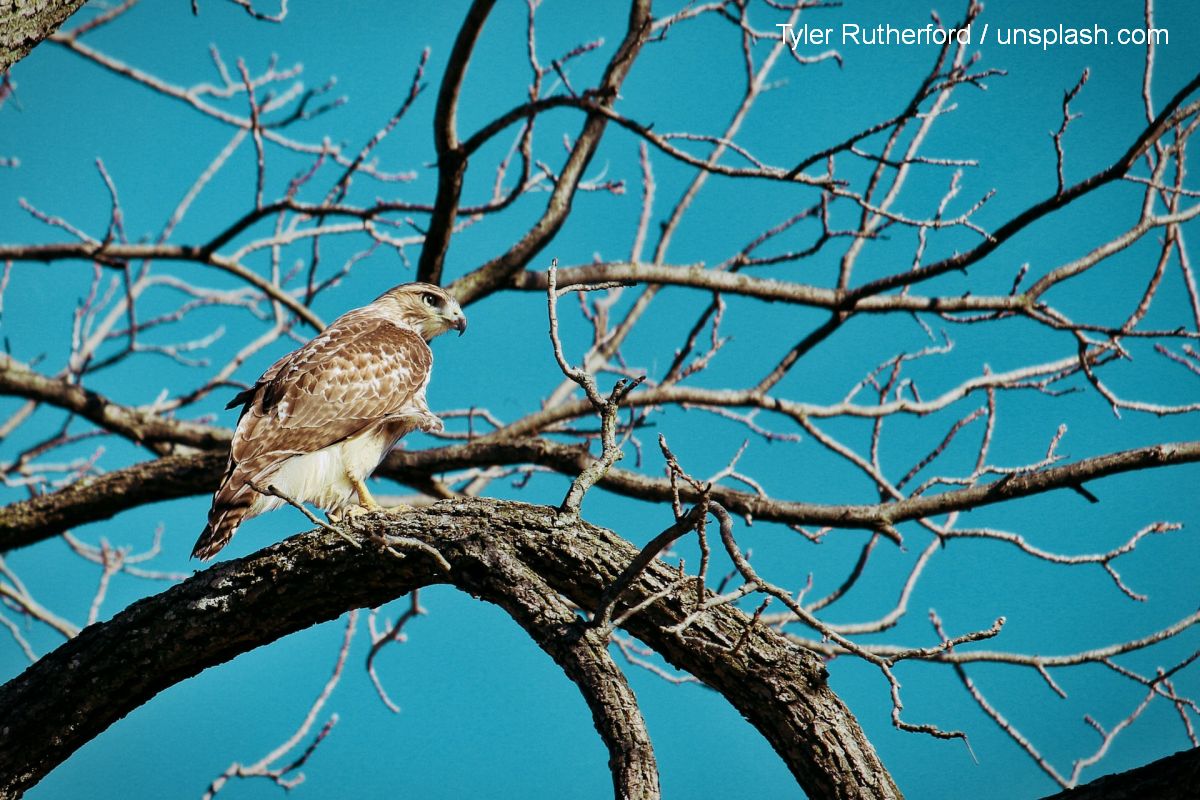Hațeg Country, Lost World of Dinosaurs
The Hațeg Country - Țara Hațegului Geopark, located in Hunedoara County, is the first International Geopark in Romania and Eastern Europe recognized as a UNESCO site.

Daniel Onea, 28.03.2025, 14:00
The Hațeg Country – Țara Hațegului Geopark, located in Hunedoara County, is the first International Geopark in Romania and Eastern Europe recognized as a UNESCO site, for the creative way of valorizing a special geological and cultural heritage for tourism, education and science. The University of Bucharest has taken over the administration of the status of International Geopark and UNESCO site. In partnership with other entities, the University contributes to the fulfillment of all international obligations and always proposes research activities.
Zoltán Csiki-Sava, associate professor and researcher at the Faculty of Geology and Geophysics of the University of Bucharest, says that information is extracted from the rocks related to the creatures that lived here in the Earth’s past: “First of all, our activity is focused on the discovery and interpretation of the remains of dinosaurs and other animals that lived in the Hațeg area approximately 70 million years ago. Dinosaurs are mainly the ones that hold the attention of the press and the general public. From this point of view, recently, we managed to identify two new species of dinosaurs from the titanosaur group, two new species that were added to the other two species that were previously known. This is not unique or rare. Two years ago, we also managed to identify a new species of dinosaur, also herbivorous, like titanosaurs, but, this time, somewhat smaller and bipedal. We named it Transylvanosaurus. Likewise, in previous years, other species of dinosaurs were discovered and described from the Hațeg area, both by us and by colleagues working in that area, as well as species of crocodilians, species of turtles, mammals, flying reptiles, and so on.”
Equally important are the discoveries and research related to understanding the environment in which these animals lived, their age, the period when these animals existed, continues Csiki-Sava Zoltán, associate professor and researcher at the Faculty of Geology and Geophysics of the University of Bucharest: “Including from these points of view, we have had some quite significant results in the last few decades. These have allowed us to understand in much more detail the ecosystem that existed here, in an island area. The Hațeg area of today and not only, a large part of the Transylvania area, 70 million years ago, was an island area surrounded by marine waters, warm waters. It was a tropical or subtropical island, and this island, in practice, decisively influenced the life of the organisms that existed here. What we are doing is trying to sketch in as many details, as vividly, life on this island. For several decades, research in the Hațeg area and not only, in general, in the Transylvania basin area, has been carried out in collaboration with researchers from abroad. This collaboration has brought many benefits to geological and paleontological research in that area. Working with colleagues from abroad, we basically have access, on the one hand, to their knowledge and to their research databases, and, on the other hand, collaborating with them always means an exchange of information, which helps us to understand much more deeply, much more in detail, the topics we are researching. So, these collaborative activities have proven, in the end, to be essential in the results we have managed to produce in that area.”
The research results from the Hațeg Country Geopark are extraordinary, identifying some of the most fascinating species of dwarf dinosaurs, adapted to island conditions. However, these results often do not always reach the public’s attention: “When new discoveries, new species that we identify, appear, we try to bring such information to the general public, precisely because these discoveries allow us to speak in an easily accessible language about information that is otherwise very deeply scientific and quite difficult for the general public to understand. But we try to reach the general public and talk about those discoveries in a language that is as accessible as possible and in a language that helps the general public to truly understand the purpose and significance of the research we are conducting. But, apart from these contacts with the press, there are unfortunately not many opportunities to speak, to bring these discoveries to the general public. There are exhibitions that are organized, but quite rarely, in different areas of the country related to such discoveries, but, in general, they are isolated initiatives. There is not, let’s say, a comprehensive, national strategy that would help this communication of research, of science to the general public.”
Research never stops, says Zoltán Csiki-Sava, associate professor and researcher at the Faculty of Geology and Geophysics of the University of Bucharest: “There are new discoveries, there are old remains that we have researched and that are currently in the works. Likewise, together with collaborators from different countries in Europe, but not only. We are quite sure that, in the near future, within a few years, we will be able to add several more new species of different animals that lived in this area tens of millions of years ago. Obviously, we cannot give many details about these things for now. Most of the research is ongoing, they mainly have to be kept quite carefully under control, because the announcement, for example, of a new species has to be done in a certain way, according to a certain scientific rigor. This rigor is violated when inappropriate information can reach the attention of the general public prematurely. But, for sure, there will be new things and new, interesting discoveries from the Hațeg area in the next few years.”
The dinosaurs discovered in Hațeg Country (Țara Hațegului) are unique in the world, their scientific importance and attractiveness being increased by the discoveries of nests with dinosaur eggs and chicks, of mammals contemporary with dinosaurs, and of a gigantic flying reptile from the pterosaur group. (CC, LS)






























